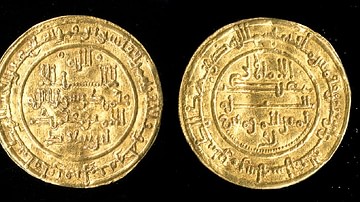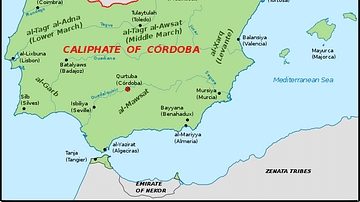Illustration
This map shows the fractured landscape of al-Andalus following the collapse of the Umayyad Caliphate of Córdoba in 1031. Dozens of independent Muslim-ruled states, called taifas (from the Arabic for "party" or "faction"), rose from the ruins—engaged in rivalry, diplomacy, and warfare to assert their dominance.
At their peak, there may have been as many as fifty of these mini-kingdoms. Over time, a few major centers consolidated power, including Zaragoza, Valencia, Toledo, Badajoz, Seville, and Granada. In 1085, the Christian king Alfonso VI of León and Castile captured Toledo, a decisive blow that triggered an urgent call for aid. The taifas, facing existential threats, turned to the Almoravids, a newly powerful and austere Berber dynasty from North Africa, ushering in a new chapter of intervention and unification under foreign Islamic rule.
About the Author
Cite This Work
APA Style
Netchev, S. (2022, May 13). The Taifa Kingdoms of the Iberian Peninsula, 1031-1086. World History Encyclopedia. Retrieved from https://www.worldhistory.org/image/15872/the-taifa-kingdoms-of-the-iberian-peninsula-1031-1/
Chicago Style
Netchev, Simeon. "The Taifa Kingdoms of the Iberian Peninsula, 1031-1086." World History Encyclopedia. Last modified May 13, 2022. https://www.worldhistory.org/image/15872/the-taifa-kingdoms-of-the-iberian-peninsula-1031-1/.
MLA Style
Netchev, Simeon. "The Taifa Kingdoms of the Iberian Peninsula, 1031-1086." World History Encyclopedia. World History Encyclopedia, 13 May 2022. Web. 15 Apr 2025.








